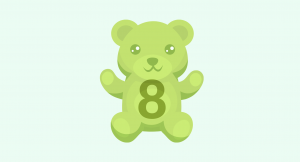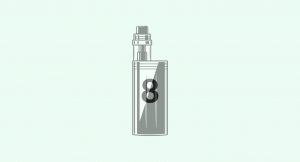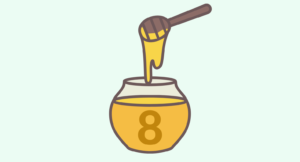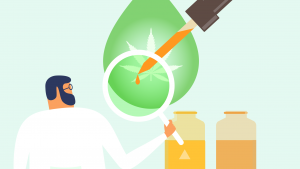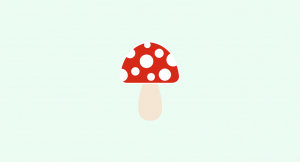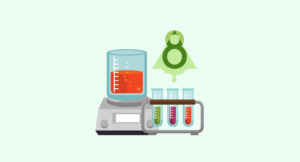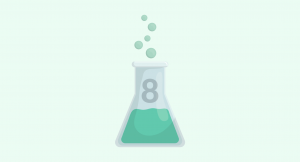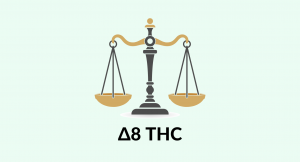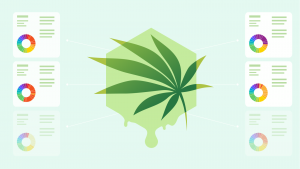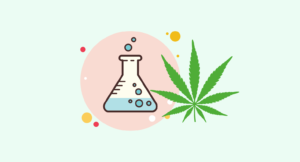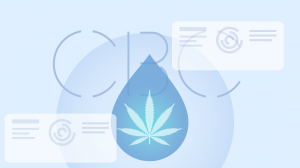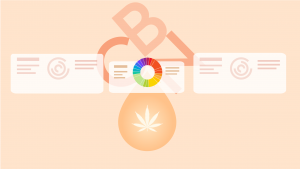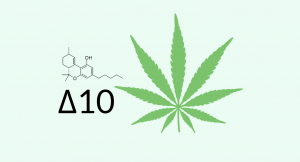
Evidence based
Best Delta 8 THC Flower: Marijuana Alternative
Delta 8 THC flower is a popular alternative to marijuana. Its effects are best described as the middle-ground between marijuana and CBD.
As most of the world continues to ban marijuana (except you, Canada), customers are turning to a new psychoactive cannabinoid called delta 8 THC.
Delta 8 THC flowers are entirely made from hemp — which makes them legal on a federal level. Only a handful of specific US states have banned the delta 8 isomer.
Smokable (or vapable) hemp flower can be infused with delta 8 extract to give it a pleasant psychoactive kick.
In this article, we’ll explore everything you need to know about buying and using delta 8 THC flower effectively (and legally).
What is Delta 8 THC Flower?
Delta 8 THC flower is made by infusing raw, non-psychoactive hemp buds with delta 8 THC distillate. This gives the hemp a psychoactive twist — while remaining legal throughout the US. They’re used as a legal, milder, less anxiety-inducing alternative to marijuana.
The active ingredient in marijuana is a compound called delta 9 THC. The problem is that these products are banned by the federal government. Only products with less than 0.3% delta 9 THC is considered legal.
The delta 8 THC isomer is almost identical to delta 9 THC, if not for the movement of a double bond. This difference is subtle from a structural standpoint, but it has a big impact on the effect profile of the compound.
Delta 8 THC is much more relaxing than delta 9. People who find marijuana makes them feel too anxious, paranoid or stimulated often turn to delta 8 THC flower instead. It’s much less likely to produce these side effects. Instead, delta 8 THC is more likely to make you feel hungry or sleepy — which might be a negative for some but a positive for others.
What Are The Effects of Delta 8 THC Flower?
The effects of delta 8 THC flower are very similar to the effects of marijuana but with more emphasis on the relaxing profile.
D8 is described as being somewhere in between the effects of CBD (cannabidiol) and delta 9 THC.
It’s mildly psychoactive, with a strong emphasis on the body. Your muscles feel relaxed, and you may feel either heavier or lighter than usual.
You may feel some perceptual changes. Music and imagery may appear different. It isn’t quite a hallucination, but there are some key differences compared to being completely sober.
Delta 8 flower is made from hemp flower, so you’ll also get all the benefits of this product in addition to the delta 8 content. Hemp flower contains high concentrations of CBD, CBC, CBG, and various hemp-derived terpenes — each offering its own characteristic effect.
Most people who use delta 8 flower agree these products are particularly soothing and calming. You’ll likely feel a sense of peacefulness similar to low doses of marijuana or other herbs like kava or kratom.
Higher doses don’t tend to become stimulating but will instead become even more relaxing — potentially even sedative. This is unlike marijuana which tends to feel more energizing and stimulating in higher doses.
If you want something similar that has a stronger energizing effect, check out delta 10 THC instead.
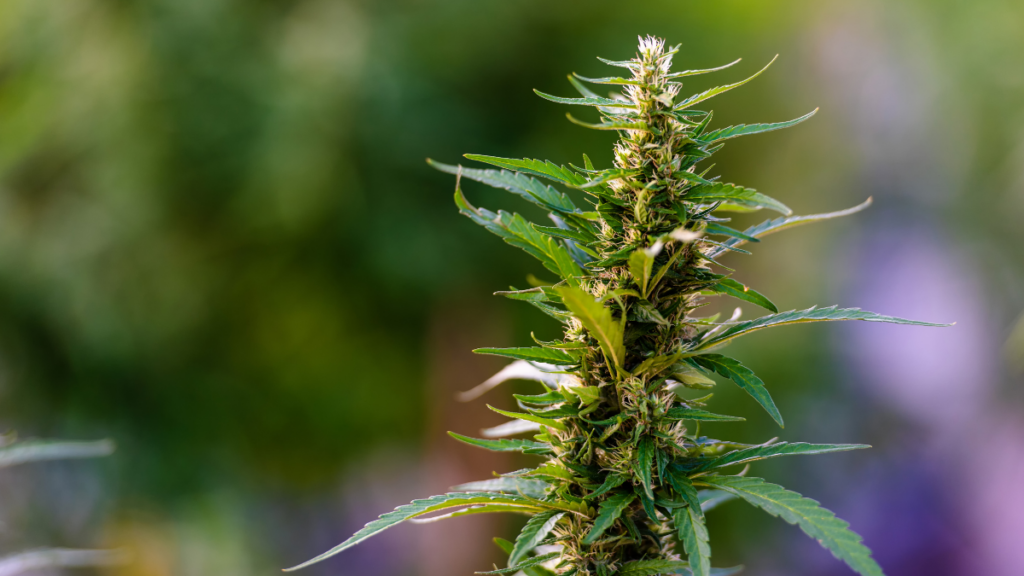
How is Delta 8 THC Flower Made?
Delta 8 THC is a naturally occurring molecule. The problem is that it’s produced only in trace amounts in marijuana and virtually nonexistent in hemp.
If marijuana is stored incorrectly or aged for several months, the delta 9 THC content naturally converts to delta 8 THC, as well as another cannabinoid called CBN (cannabinol).
While it’s possible to age marijuana flowers to make delta 8 THC flower — flowers produced this way will still contain high concentrations of delta 9 THC and are illegal in most states. These types of delta 8 THC flowers are only available in places like Canada or specific states such as Washington, Oregon, or California, where marijuana is legal.
Most delta 8 THC flower is made from hemp in order to avoid the Schedule I status.
Here’s how delta 8 flower is made, step by step:
- CBD is extracted and concentrated from hemp flower
- The CBD concentrate is then put through a process called isomerization to convert CBD to delta 8 THC
- The resulting delta 8 distillate is then melted into a liquid and sprayed over freshly dried hemp flower buds
- Sometimes additional delta 8 powder is then added, which sticks to the distillate and natural resin on the hemp flower
Is Delta 8 THC Legal?
Delta 8 hemp flower made using the method above is legal in most US states (some exceptions listed below). The entire product is derived from hemp and contains less than the legal limit of 0.3% delta 9 THC.
Most US states have their own laws regarding cannabis. The majority of states have either adopted the same regulations put in place by the federal government, while a handful have adjusted their local state laws to be more relaxed or more restrictive.
The federal regulations are very specific about what part of the cannabis plant is illegal. As per the 2018 Farm Bill, the law specifies that the marijuana plant is listed as a Schedule I restricted substance. Marijuana is defined as any Cannabis sativa that produces more than 0.3% delta 9 THC. Anything that makes less than this is classified as hemp.
Related: What’s the difference between hemp & marijuana?
The law specifically bans any extracts made from marijuana or products that contain more than 0.3% delta 9 THC.
The feds also ban synthetically-derived forms of THC — which includes diarylpyrazoles, aminoalkylindoles, phenylacetylindoles, or any other man-made chemicals that resemble THC.
This doesn’t include naturally-derived forms of THC — such as delta 8 THC.
Read More: Is Delta 8 THC Legal Where I Live?
What’s The Difference Between Synthetically-Derived & Naturally-Derived?
The difference between synthetically derived and naturally derived THC comes down to the presence or absence of a particular compound in nature.
Since delta 8 THC is found in nature, and the process of creating it also relies on a naturally occurring compound (CBD), the final product is considered naturally derived.
Other compounds, such as phenylacetylindoles, are not found in nature — so they’re classified as synthetically derived.
There’s only been one state that has come forward and specified that they consider delta 8 THC synthetically derived — this is the state of Vermont.
Related: What are synthetic cannabinoids?
States That Ban Delta 8 THC
There are no US states that specifically ban delta 8 THC — but there are a few that ban all forms of THC no matter what their origin may be.
States that prohibit delta 8 THC include:
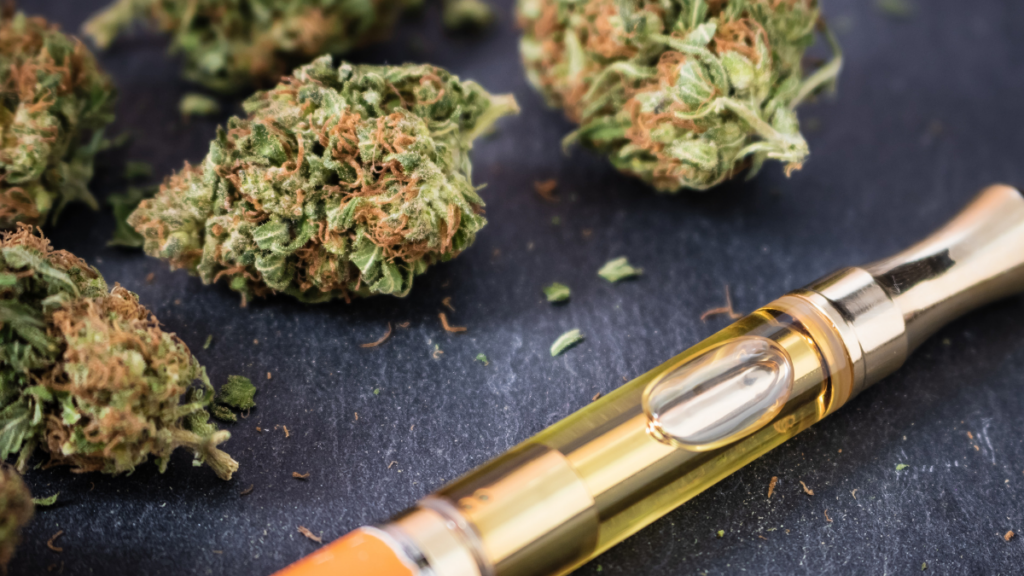
How to Use Delta 8 THC Flower
You can use delta 8 THC flower the exact same way you would with marijuana or hemp flower.
Here are the three most common ways of using cannabis flower in all forms:
1. Smoke It
The oldest and simplest way of using the flower is to smoke it.
You can either roll it up into a joint or use a bong or pipe.
The combustion process instantly vaporizes the active cannabinoids, which are then absorbed through the lungs.
This method has a very fast onset of effects. Delta 8 THC enters the brain within about 2 minutes to exert its effects.
The downside is that, as we all know, smoking is not good for our health. Chemical byproducts of the combustion process, such as carbon monoxide, toxic hydrocarbons, and radioactive isotopes, all enter the lungs and bloodstream, causing damage over long periods of time.
2. Vape It
Vaping is my preferred way of using delta 8 THC flower or any cannabis flower for that matter. It has all the same benefits as smoking, without the negative impact on health. To vape your delta 8 THC flower, you’ll need to use a device called a dry herb vaporizer.
These devices feature a chamber to place the herb, a temperature-controlled heating element, and a chamber for the vapor to travel into the mouth and down the lungs.
When you vaporize hemp flower, the active ingredients, including delta 8 THC, CBD, CBC, CBG, CBN, and various hemp-derived terpenes, are all converted into a vapor that can be absorbed quickly through the lungs.
However, these devices don’t heat the flower enough to cause it to combust — which eliminates all the nasty byproducts of the combustion process.
Additionally, vaporizing your herb has a much lower temperature and is, therefore, less harsh on the throat and lungs than smoking. Most vaporizers have a maximum heat of 220ºC (428ºF). Compare this to the flame from a lighter, which is around 1800ºC (3200ºF). While this isn’t the temperature that enters the lungs as smoke, the smoke is still significantly hotter than vapor from a dry herb vape.
Related: Check out the best delta 8 THC vape cartridges
3. Bake It
You can also use delta 8 THC hemp flower in baking or cooking to make your own edibles. You can simmer it in some butter to make active cannabutter, add it to brownies or other baked goods, and more.
The possibilities are endless. Any recipes you find that call for hemp or marijuana flower can be substituted with delta 8 THC flower.
Will Delta 8 THC Get You High?
Delta 8 THC has about 50% the psychoactivity of delta 9 THC. If you take enough, it will produce a very similar high as delta 9.
The main difference is that the effects are more relaxing rather than stimulating.
Delta 9 THC is sedative in low doses but becomes stimulating in higher doses. This is why sometimes weed makes you feel tired; other times, it keeps you up at night instead. With delta 8, the more you take, the more relaxing it becomes. It doesn’t have bidirectional effects depending on dose and is, therefore, more reliable for alleviating anxiety or promoting sleep than conventional delta 9 THC.
The high from delta 8 THC is also more likely to relax the muscles or exert other effects on the body — rather than just the mind. It often makes people feel super chill, similar to other herbs like kava. It becomes easy to find a comfortable position wherever you’re sitting or lying down, and it has a tendency to dull or mute pain. It’s especially useful for muscle or ligament pain caused by or aggravated by muscle tension.
Will Delta 8 THC Flower Make Me Fail A Drug Test?
Yes. Most drug testing kits used in corporate offices, job sites, and hospitals aren’t sensitive enough to tell the difference between delta 8 and delta 9 THC.
Even if delta 8 THC is legal where you live, you will register a positive for THC — which may be illegal.
If you’re subject to regular or scheduled drug testing, I recommend you avoid using delta 8 THC flower at least three weeks before the planned drug test.
Quality Control: Not All Delta 8 THC Flower is Created Equal
Delta 8 THC isn’t a synthetic cannabinoid because it wasn’t invented by humans. It’s naturally produced in the cannabis plant on its own.
However, in order to derive delta 8 THC from hemp, the plant needs a little bit of a push. The process used basically creates the ideal environment for CBD to reshape itself into delta 8. This involves dissolving the CBD into a liquid using solvents and then exposing it to heat and reducing the pH. After a few hours in these conditions, most of the CBD will convert to delta 8 THC.
This process is fairly simple and straightforward — however, if done incorrectly, the resulting extract could contain any number of contaminants of unwanted byproducts. Many of the byproducts are not only not delta 8 THC; they could even be toxic.
Additionally, solvents need to be removed, acids need to be neutralized, and byproducts of the reaction (such as delta 9 THC) need to be separated. If these steps aren’t done with a high degree of precision — which requires the oversight of a skilled chemist and high tech (read: expensive) lab equipment.
Low-grade delta 8 THC extracts often contain illegal concentrations of delta 9 THC, low concentrations of delta 8 THC, and a wide range of potential contaminants that make the extract unsafe.
The only way to avoid ordering unsafe or ineffective delta 8 THC flower is to source your products from well-respected, reputable brands that provide up-to-date test results for every batch of product listed on the company website.
Third-party testing is the gold standard for proving the purity of all delta 8 THC products.
These tests are run by an independent lab that has no affiliation with the manufacturer. They run their own tests on the sample sent to them to assess the overall quality and purity. They then fill out a certificate of analysis signed by the lab manager. This is then sent back to the manufacturer, who should then publish the report on the website.
Always check for the presence of these tests before you buy. Here’s what to look for when in terms of third-party testing:
- First, check for the presence of these tests; links should be included on the product page directly — if not, reach out to the customer service team to ask for it
- Second, check the cannabinoid content listed on the test — the extract should show high levels of delta 8, and low levels (less than 0.3%) delta 9
- Third, check for contaminant tests — this includes heavy metals, solvents, and pesticide residues
Note that ND stands for “not detected” — this means the test was run, but the compound wasn’t detected.
Conversely, NT means “not tested” — this means the test wasn’t even performed.
Many companies will include empty tests that list NT because most people don’t know what this actually means. By seeing the contaminant testing page, they assume the test was run. Just because the page was included doesn’t mean the test was actually performed.
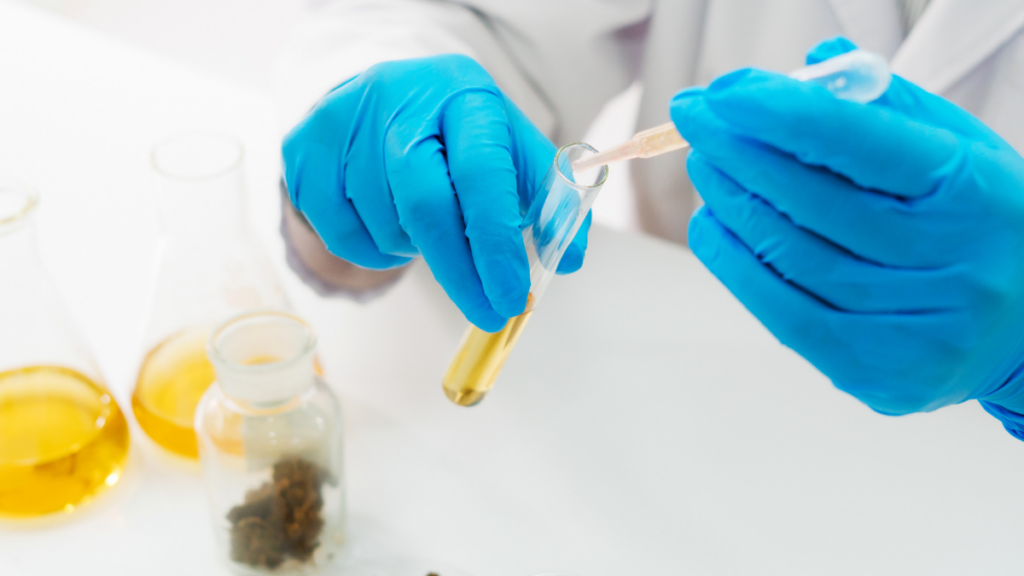
Where To Buy Delta 8 THC Flower
Delta 8 THC flower has only recently become popular. If you were to look for this product category about four years ago, you probably wouldn’t be able to find it at all.
Now, there are dozens of companies selling these products. Most companies that sell hemp flower will also carry delta 8 THC versions. A few examples include Mr. Hemp Flower and Industrial Hemp Farms (recommended).
There are also a lot of companies popping up that specialize in selling delta 8 THC products exclusively. Many (but not all) carry delta 8 infused flower too. Some examples to check out include Delta Effex, Organic CBD Nugs, and Plain Jane.
If you’re in Europe, the best place is from a company called Hempire Gardens (often out of stock).
The best way to use delta 8 THC flower is in a dry herb vaporizer — my favorite is the DaVinci IQ2.

